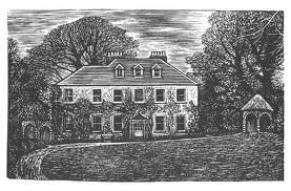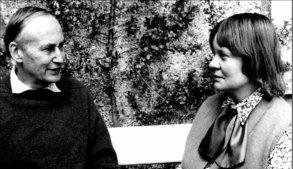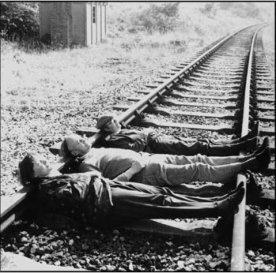Janet and Reynolds Stone, both distinguished personalities in their own right, occupied The Old Rectory in Litton Cheney
from 1953 until Reynold’s death in 1979. Reynolds Stone was a notable engraver and typographer, Janet an accomplished
photographer.
REYNOLDS STONE 1909-1979
Reynolds Stone was born at Eton on March 13 1909, where both his father and grandfather
were house masters. He read history at Magdalene College Cambridge. After taking his
degree in 1930 he became an unofficial apprentice at the Cambridge University Press under
Walter Lewis. Encouraged there by Mr Nobbs, the press overseer, he began experimenting
with engraving on metal and wood.
A chance meeting on a train from London to Cambridge with Eric Gill, (Stone was carrying
four sheets of Gill’s lettering bought at the V & A), resulted in an invitation to stay at Gill’s
house at Pigotts. He left after two weeks having engraved an alphabet under Gill's
supervision, who felt that at this point he had nothing further to teach him. He moved to
Taunton to work at the printing firm of Barnicott and Pearce. During this time he engraved
his first bookplate; other commissions followed, which allowed him to leave Barnicott and Pearce and became an engraver
full time. Among many commissions he engraved his first Royal bookplate for Elizabeth of York (the Queen Mother) and
engraved headings for the Nonesuch Shakespeare.
In 1937 he was commissioned to engrave the Royal Arms for the Order of Service for the Coronation of King George VI, (he
had already engraved a bookplate for the then Princess Elizabeth), to be printed at Cambridge, but possessors of the first
edition of this most handsome document, designed by Stanley Morrison, will not find Stone’s engraving in it - he was late and
Walter Lewis finally refused to wait any longer and went to press with a previous and much inferior design! However, the
soon-ordered reprint contained Stone’s engraving.
He married Janet Woods in 1938, and moved to Bucklebury, Berkshire. At this time he illustrated Rousseau’s 'Confessions'
for the Nonesuch Press and 'The Praise and Happinesse of the Countrie-Life' for the Gregynog Press. In 1939 he taught
himself to cut letters in stone and, when commissions for memorial and other tablets increased, he took on and trained
assistants, one of whom, Michael Harvey, became a distinguished letterer in his own right.
During the Second World War he worked as an aerial photographic interpreter for the RAF, and continued to engrave.
In 1953 they moved to The Old Rectory at Litton Cheney in Dorset, which was to be his home for the rest of his life. The
garden and surrounding landscape proved to be a fertile source of inspiration for his painting and engraving.
Reynolds engraved the clock device, the court circular, and Royal Arms headings for
The Times newspaper. He engraved
the Royal Arms for the coronation of
Queen Elizabeth II, and the official Coat
of Arms for HMSO still seen on all
official documents, including the British
Passport. He engraved hundreds of
bookplates (including Benjamin Britten
and Peter Pears and the Prince of Wales),
often with characteristic and elegant Italianate
swirls and flourishes. He designed the 3d
Victory Stamp (1946), the £5 (1962) and £10 notes (1964) which were in use until
decimalisation. He cut many important memorials in stone and slate, including those
for Winston Churchill, Ralph Vaughan Williams and T S Eliot in Westminster Abbey.
He had several exhibitions, both through the Arts Council, notably in Aldeburgh in 1958, and at private galleries.
Among the many books he illustrated were 'Apostate' (Forrest Reid), 'The Open Air' (Adrian Bell), and 'Omoo' (Herman
Melville); uniquely, Sylvia Townsend Warner illustrated his engravings with poetry in 'Boxwood'. His magnum opus is
perhaps the set of engravings, 'The Old Rectory', which was published in 1976 by Warren Editions. Among his last works
were engraved illustrations for 'A Year of Birds', with poems by Iris Murdoch, published by the Compton Press. He was
awarded the CBE in 1953, and was made an RDI (Royal Designer for Industry) in 1956. He died on June 23 1979.
“Good art shows us reality, which we too rarely see because it is veiled by our selfish cares, anxiety, vanity, pretension.
Reynolds as artist, and as man, was a totally unpretentious being. His work, seemingly simple, gives to us that shock of
beauty which shows how close, how in a sense ordinary, are the marvels of the world” - Iris Murdoch from her memorial
address 1979.
JANET STONE 1912-1998
Janet Clemence Woods, was born at Cromer, Norfolk on the1st of December 1912 and died on the 30th of January 1998 in
Salisbury, Wiltshire.
A descendant of Elizabeth Fry, the prison reformer, Janet Stone came of an ecclesiastical family (her father, Edward Woods,
was Bishop of Croydon and then of Lichfield; one of her brothers, Frank, was Archbishop of Melbourne, another, Robin,
Bishop of Worcester). She shared the qualities which singled her father out for church leadership - a good-tempered,
gregarious nature, personal magnetism, organising powers and a strong, melodious voice.
So fine a soprano was she indeed that for three months, early in her marriage, she trained as an opera singer under the
famous Italian teacher Miele, who gave her free lessons because he believed her to be better equipped to sing Verdi than
anyone he had ever met. But the training separated her too much from her husband and her household, which had become
the centre of her life. Her decision to give up her musical career was a loss to opera but not to British cultural life, for her
creative energies went into making a perfect environment where some of the best British artists and writers came to work
and to relax.
With her social curiosity and zest for life she had immediately increased their
circle after they married, drawing in the many clever and talented people with
whom her husband came in contact, but was too shy to entertain. This led to
some notable collaborations - such as his illustrations to a selection of Benjamin
Britten's songs, his dust-jackets for the books of Iris Murdoch and Cecil Day Lewis
and his watercolours and engravings for Another Self and Ancestral Voices by
James Lees-Milne. The stream of guests in summer brought Reynolds a large
number of close friendships, such as he had never enjoyed before.
Janet Stone was in a long line (now extinct) of
Victorian and Edwardian hostesses that included
Julia Margaret Cameron, Blanche Warre-Cornish and Mrs Leslie Stephen, whose cultured
gatherings represented a higher peak of English civilisation, despite their modesty, than did
most of the grand aristocratic establishments of the period. At Litton Cheney with the Stones, it
was easy to believe oneself a hundred years back in time: there were fires in every bedroom,
readings aloud round the drawing-room hearth in the evenings, lunch in a little arbour of Janet's
design, picnics in high summer on the deserted Chesil beach, winding walks through a
woodland garden full of rivulets and small bridges, and, amazingly, butter from their cow (and
churn).
The company, whether it were John Betjeman, Sidney Nolan, L.P. Hartley, Henry Moore or
Frances Partridge, was always entertaining. One might say that Janet's motto was, "If a thing is
worth doing, it is worth doing by hand"; and such perfectionism was pursued on a very modest
income and with the assistance of only one devoted helper in the kitchen.
Janet Stone was a romantic with a strong element of fantasy in her make-up, which did not
clash with her practical abilities. Her handsome and stylish appearance recalled the Edwardian age. With her wide-brimmed
hats and veils to protect her delicate skin, her corn-coloured hair and upright carriage, she made a memorable impression.
Her conversation was ardent, emphatic and humorous. For all her enthusiasm for making new and illustrious acquaintances,
she was unexclusive and was devoted to the many young people who came to stay and were bewitched by the demi-
paradise that she had created.
Surprisingly, despite her galvanising presence, she was not self-confident. She
depended absolutely on her husband and after his death, in 1979, she gave up the
house and entertaining on the same scale. Without Reynolds, life in Litton Cheney was
unbearably lonely.
Her life and home with him are commemorated
in her photographs, some of which have been
published in her own work, Thinking Faces
(1988), others of which were commissioned for
books and magazines; she took the author
portrait for Kenneth Clark's 1969 book-of-the-television-series Civilisation. A
collection of her prints is now in the National Portrait Gallery archive.
She worked almost entirely in black-and-white. Most of her best portraits were done
at Litton Cheney, with one of her three cameras, a Canon, a Yashica and an old
Rolleiflex, the product of hours of patient observation. Some have an extraordinary
spiritual depth - such as those of Iris Murdoch, David Jones and John Piper - as
beautiful in their way as those of the four Stone children taken in childhood and
youth; and humour runs through many of her images - of John Bayley, Professor of
English Literature, lying happily asleep on a railway line; and of John Sparrow,
Warden of All Souls, reading absorbedly, with a teacosy on his head.
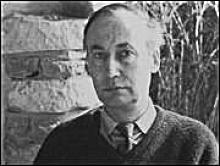


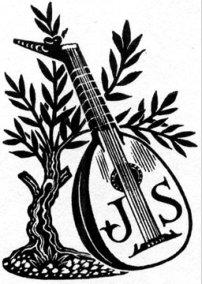
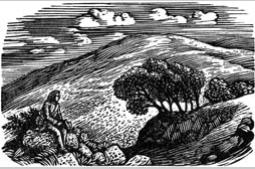
JANET and REYNOLDS STONE
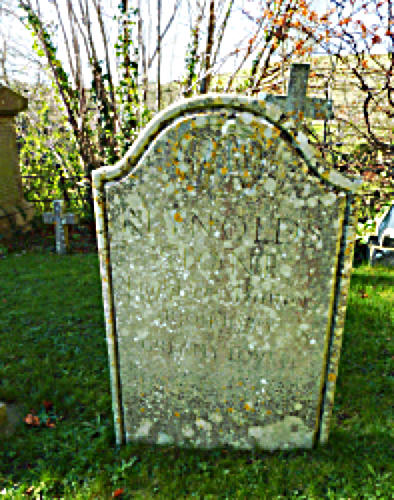
FUNERAL ADDRESS – Wednesday, 2
nd
May 2012
By J. David Kennard (Major Retd. Irish Guards – Son)
Colin David Kennard, much loved husband, father, step-father, brother, uncle, grandfather, cousin, godfather and good friend.
What does one say in just a few minutes about a man who was, at just the age of 23, recommended for a Victoria Cross?
Who was this man and what did his life mean? Beneath an endearing modesty, self-deprecating sense of humour, keen sense
of fun, was a man of many talents and dimensions. A man who was respected and loved by his friends and family and those
he led. He was loved for what he was and what he stood for during his long and full life. I have been moved by the letters sent
to me, and they express over and over again “his bravery, inspiration, leadership, fun, modesty, kindness, determination and
many other compliments. A close friend wrote, “He had an internal vibrancy and straightforwardness; a genuinely good man –
a charming host”.
HOME AND EARLY CHILDHOOD
In his childhood, he lived in beautiful and interesting homes: Corton Denham in Somerset; the Old Bell House, and Purslow
Hall in Shropshire. Early life was idyllic as the second youngest of five rumbustious siblings. Country sports were the main
recreation with hunting and shooting being the most popular. Both his father and mother came from large families themselves
and so there was no lack of cousins with whom to have fun. He and his younger brother Bob, were often packed off by train
with luggage labels attached to their lapels, to stay for weeks on end with their Colfox grandparents and cousins in West
Dorset. I even found recently, one of these labels, which described the boys as ‘goods’ to be ‘delivered’ to the Station Master!
These halcyon days left my father with an abiding love of West Dorset where he felt completely at home.
GROWING UP
For a person blessed with a strong independent streak, life at prep school at Chafyn Grove, Salisbury, and then Radley
College, was considered irksome and constricting. His main outlet for frustrations was on the rugger field where his
competitive spirit was given full rein. He was always impatient for the holidays, particularly the winter holidays, so that he could
go off with his gun and his dog, an assortment of brothers and his father. From reading his game book, it reveals that they
managed to go out most days! One particular story comes to mind of this period. His elder brother Michael was a notoriously
poor shot. One evening before a day’s shooting, my father and his partner in crime, his younger brother Bob, removed the
shot from all of Michael’s cartridges and then refilled them with pheasant feathers. During the first drive the following day, as
the duo watched with anticipation, Michael fired, missing a passing pheasant, but to his astonishment and disbelief and to his
brothers’ unbridled mirth he was submerged in a deluge of feathers. Gleeful cries of ‘Good Shot’ echoed across the field.
From Radley, in 1938, he went up to Christ’s College, Cambridge to read Land Management.
WAR
Like so many of his fellow students, he joined the local territorial regiment on the outbreak of
war in 1939, but fearing that he would never see active service, he decided to join the Regular
Army, but which regiment? His father’s advice was to join the Grenadier Guards. This was not
a good move. He was turned down by that Regiment’s Lieutenant Colonel, partly because his
younger brother Bob, had already been accepted by them a few weeks previously. In a moment
of inspiration, he sought a recommendation for the Irish Guards – the Micks - instead. As he
told us years later, what on earth was he going to say to his father for having been turned down
by the Grenadiers? Two or three good friends had already joined the Micks and had not been
at all reticent in their disapproval that my father should be considering a rival. In spite of the
irregularity of this procedure, the Grenadier Colonel found himself agreeing to this. The
subsequent interview with the Micks, was hardly an interview at all, so taken aback were they
by his audacity. He was ordered to report to Sandhurst without delay.
Like so many of my father’s generation, he rarely talked about the war. One or two amusing anecdotes percolated out during
our childhood but he did not dwell on his personal exploits which happen to be well documented. My father was very modest
about his achievements, he always believed that many others deserved greater recognition than himself and that so many
‘acts of bravery’ happened because of the accumulated deeds and common endeavour of many. He was one of the lucky
ones who survived active service in North Africa, Italy and the advance through Holland and Germany.
Amazingly, as a young officer in North Africa, he managed to survive, albeit wounded, a particularly brutal
five-day battle on the ‘Bou’, against overwhelming odds where the Battalion was decimated. Of his
original Company, only a couple of dozen Irish Guardsmen survived that battle. It was for this action that
he was recommended for a Victoria Cross but was awarded an immediate DSO.
It was only in recent months that he talked in any detail about these wartime experiences, dwelling
somewhat on the utter futility of war and the waste of young life. All his life he mourned especially the
loss of two close friends, John Kennedy and George Ismay. It is true to say, that the intense camaraderie
born of these events left its mark on those survivors but inculcated an especially strong sense of ‘family’ in
the Micks which is nurtured to this day. My father always considered the Micks his Second family and he
rarely missed an Irish Guards’ party.
However, not all his experiences in North Africa were unpleasant. There is an entry in my Father’s game
book for 28
th
March to 12th April 1943 at Medjez-el-Bob (Tunisia), just before the ‘Battle of the Bou – hills
212 and 214’ - and I quote, “Place: Medjez-el-Bob whilst in front line. Guns: self. Partridges – 15. Hares –
2. Remarks: sport somewhat hampered by heat and proximity of Germans. Birds very tough eating!”
POST WAR
On demobilisation, like many of his peers, he decided not to return to Cambridge thinking that too much had happened and
that he was, at the age of 27, too old. He ended up in the City working for United Glass Bottles. It was a job, but not one that
he relished particularly. For relief, he played rugger with passion and commitment for both Wasps and London Irish and was
even offered an international trial for Ireland which he turned down as he did not deem himself to be Irish enough!
DORSET
In the mid ‘50s he grabbed the opportunity of moving himself and his family, having married my mother Rosemary in 1947, to
Dorset to become the Sales Director of Joseph Gundry in Bridport, the largest net making firm in Europe. This got him back to
the country and we lived in various houses: Wytherston, Symondsbury with the cousins, and Drimpton, before eventually
settling in Litton Cheney where he soon became a stalwart and then leader of the Parish Council.
These were happy years and one of my abiding memories is of being dragged round every point to point and racecourse in the
West, come rain or shine, following my father’s other passion, the Turf. Picnics galore, put together by our long suffering
Mother and, as my sister Clare and I got older, generous quantities of Gin and French of lethal strength were packed into the
boot of the car and which were disbursed liberally to our friends along with tips on what to back.
He was the most generous of hosts. Whenever I appeared at home, usually accompanied by numerous brother officers from
the Mick or Celtic fringe, possessed of powerful thirst and hunger, my mother emptied the fridge and my father the cellar while
the washing machine churned away.
As my father got older, playing tennis became his twice-weekly activity. He was no mean player and only ceased playing in his
80s! He indulged too, his love of the racehorse by having minor interests in the odd horse, along with Nigel Martin of Came
and Joan Turner of Cheselbourne, amongst others. What fun they had following their equine children’s racing progress.
In the mid ‘70s, he left Gundrys, to become an independent stockbroker. He was in his element: bringing him into contact with
people and looking after their interests, along with using his aptitude for figures. He built up a good business and was pleased
when I decided to join him in the mid 80s.
LATTER YEARS
His marriage having failed at this time, he married secondly, Hillary, and acquired two stepsons, Edward and Colin. He made
his home in Hinton St. George where he was very happy for the last twenty years or so.
His increasing years and latterly, arthritis and cancer, were borne with typical stoicism and lack of complaint.
As long as he had his gin, his racing, his whisky, his After Eight mints, his hotline to his bookmakers - plural, he was as content
as he could be. His last year of life was spent in Abbey View Nursing Home in Sherborne where the care was excellent. He
always looked forward to hearing news of, and having visits from, his five grandchildren of whom he was enormously proud.
Underpinning his life was his understated acknowledgement of his spirituality. Like most English men of his era, this was worn
lightly but I know that he talked with, and to, the Almighty on a daily basis.
We loved him dearly, we shall miss him sorely but we know he is in good Hands.
QUIS SEPERABIT.
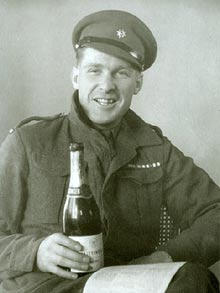
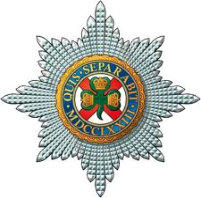
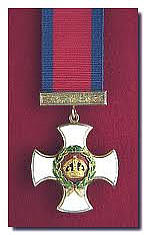
COLIN DAVID KENNARD 1919-2012
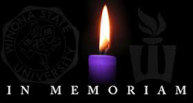
IN MEMORIAM - CONTEMPORARY
Select Name
You may not know the name of Reynolds Stone, but it is
almost impossible that you haven’t come across his
designs. If you’re familiar with the masthead of the
Economist or remember the clock on the top of the front
page of the Times; if you’ve seen the colophon on a book
published by the Folio Society or Hamish Hamilton or
owned a Penguin edition of Shakespeare; if you’ve
borrowed something from the London Library; if you had a
£5 note in your wallet in the 1960s; if you’ve walked over
the memorial to Winston Churchill on the floor of
Westminster Abbey or if you own a passport with the royal
coat of arms on the front, then you’ve been in close contact
with the work of this wood engraver, typographer, letter-
cutter and watercolourist.
The subject of this fond and beautifully illustrated memoir
was born in 1909 into a family of academics. Both his father
and grandfather were classics masters at Eton and, after
attending an unusually benign prep school, Stone duly went
on to Eton and Cambridge. From there he embarked on a
newly created graduate training scheme at the Cambridge University Press and became familiar with every branch of printing,
from machine room to design and layout. A chance meeting with Eric Gill, who taught him the technique of wood engraving, more
or less completed his education and after a short spell with a printing firm in Taunton he went freelance. Commercial publishers
and institutions of every kind, royalty, organisers of events, collectors and writers were soon beating a path to his door for title
pages, illustrations, coats of arms, logos, programmes, bookplates and all the assorted ephemera of the print world. In due course
he also learnt to cut letters in stone, and memorials became a staple of his trade.
For all this frantic activity, much of it conducted on a table at one end of his sitting room, there was another side to Stone’s story. In
1938 he married Janet Woods, the daughter of the Bishop of Lichfield, and she became the linchpin of his domestic and business
life, dealing with his occasional bouts of depression and creating at their Dorset home in Litton Cheney a legendary haven for
visitors. A photograph of the first sea lord Charles Lambe playing duets with the painter John Nash gives an engaging flavour of
what life at the Old Rectory must have been like. John Betjeman, Benjamin Britten, Kathleen Raine, John Sparrow, Gerald Finzi,
Freya Stark, Sylvia Townsend-Warner, V.S. Pritchett — the list goes on and on — were among the frequent guests. Kenneth Clark,
John and Myfanwy Piper and Iris Murdoch and John Bayley were their particular friends.
For Stone himself, however, his Dorset home was a constant source of inspiration for his art rather than a mere backdrop for
entertaining. ‘Its magical garden,’ writes his son, the author of this memoir and himself a typographer, ‘became his whole world.
Here he could find the necessary solitude to pursue perfection in all he did.’
In public, Stone campaigned to preserve the rural world he loved, and watercolour after watercolour and a succession of
beautifully modulated wood engravings attest to his passion for woods and wild things. A tree to him was a living being. He would
never pick a wild flower, he mowed the lawn avoiding the daisies and even the rain gauge of this ‘very rare treasure of a man’ had
an escape route for insects. ‘His art,’ wrote Iris Murdoch, ‘proceeded unselfconsciously from an intense personal privacy into a
public world where he set enduring standards and has given pure aesthetic pleasure to many who have never heard of his name.’
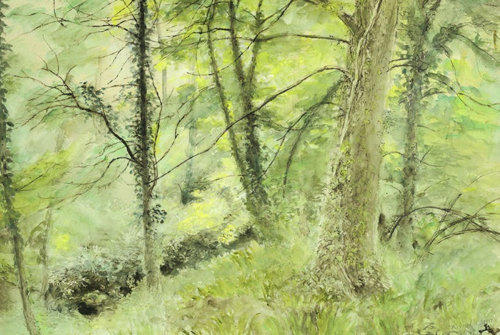
Honor Clerk, The Spectator, 21 December 2019, reviewing ‘Reynolds Stone: A Memoir’ by Humphrey Stone (The Dovecote Press, pp.163, £35)
The Genius of Reynolds Stone: a private man in a public world
Though his name is not widely known, his designs — for the press, publishing and the British passport among much else — were
once part of everyday life
1971 Watercolour by Reynolds Stone







Village Information v
Local Amenities v
Village Amenities v
About Litton Cheney v
Dorset Council v
Parish Council v
